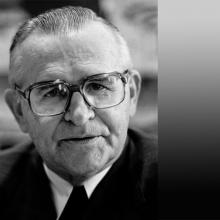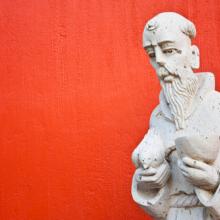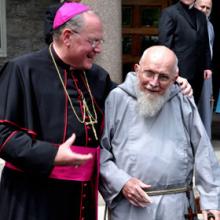Franciscan
Brazilian Cardinal Paulo Evaristo Arns, one of the most important figures in modern Brazil, died on Dec. 14 in Sao Paulo. He was 95.
Known as Dom Paulo, he was appointed bishop in 1966 and served as archbishop of the Sao Paulo Archdiocese from 1970 to 1998. But he was better known as the “people’s bishop,” and embodied the progressive church movement in South America.
FATHER PAUL DROVE US in one of the two parish cars. There were five of us boys. The parish cars were Buicks, and they were huge and black. It was late September. All five of us were 13 years old.
Now that we had achieved the age of reason we were allowed to visit the seminary to begin the process of discernment. Father Paul had high hopes but low expectations. If even one of us expressed serious interest in a second visit to the seminary, he would count the weekend a roaring success and no mistake, as he told the pastor.
They were leaning against the car as we climbed in. The pastor was a monsignor. A mon-signor was halfway between priest and bishop. We had a choice of seminaries, said Father Paul to us as we drove off. We could visit the Capuchin seminary or the Franciscan seminary. They were in the same town up on the river, and both in his experience were excellent in shaping good priests.
One of us voted for the Franciscans because he had a dog and Francis loved animals, and three of us voted for the Capuchins because the word Capuchin was cool. I voted for the Capuchins because my dad’s best friend was a small hilarious Capuchin, so as far as I knew the Capuchins were small and hilarious and cool.
FRANCISCAN BROTHER ROBERT LENTZ is a contradictory blend of traditional and tradition-challenging. That same surprising mix could be said to typify his contemporary approach to the ancient art of iconography.
Brother Robert’s work adorns cathedrals, churches, and homes of many faiths, though his name may not ring a bell, even among his fans.
But describe his icons of Martin Luther King Jr. or César Chávez, his portrayals of Jesus as black, Korean, and Navajo, and his non-Christian subjects including Mohandas Gandhi and the Sufi mystic Rumi, and the response may be “Oh, yes! I have one of those.”
Icons—religious paintings used as aids in Christian prayer—have been called a “doorway into the kingdom of heaven.” Brother Robert’s icons are striking, often for the contemporary twists in classically structured images, such as the army canteen held by St. Toribio Romo, a 20th century Mexican priest who is revered as the patron of migrants crossing the border. His Chávez image carries a copy of the Constitution and wears a sweatshirt with the United Farmworkers logo. “Icons may contain anachronisms,” he said, “when there is a great truth at stake.”
Brother Robert’s work—and his life—seem often to focus on such anachronisms in pursuit of truth. At 67, he is a Roman Catholic Franciscan brother in the New York-based Holy Name Province, living and working in a studio created for him in the order’s seminary near Washington, D.C. A religious brother is not a priest, though he lives by the vows of poverty, chastity, and obedience and dedicates his life to charitable service. It’s Brother Robert’s second stretch as a Franciscan, the order founded by St. Francis of Assisi. But it’s his third stint in religious life, having also come close to ordination as a priest in the Russian Orthodox Church Outside of Russia.
Today, Oct. 4, Christians around the world remember one of the great heroes of our faith, and the current pope’s namesake – Francis of Assisi. But Francesco Bernadone (Francis of Assisi), who died on Oct. 3, 1226, must be laughing at the irony of it all.
He was one of the first critics of capitalism, one of the earliest Christian environmentalists, a sassy reformer of the church, and one of the classic conscientious objectors to war. Even though it’s hard to imagine a saint whose life is more relevant to the world we live in today, Francis was not always so popular.
Legend has it, the first time he preached at the Vatican, the pope told him to go preach to the pigs. But later the pope had a vision: the corner of the church was collapsing, and little Francis and the youth of Assisi were holding it up. Arguably that youth movement was one of the most powerful restorations of church history. While he did not hold back on his relentless critique of the church, he remained humble and hopeful. He stopped complaining about the church as it was and started dreaming of the church as it could be. As Francis said, he heard God whisper: “Repair my Church, which is in ruins.”
So perhaps it’s providential that 800 years later the pope is named after him.
The Rev. Benedict Groeschel, whose comments defending priests who sexually abuse children sparked a firestorm of controversy (see related story here), on Thursday evening apologized for the remarks. Groeschel had said that priests who sexually abuse children "on their first offense" should not go to jail and added that in “a lot of cases,” the child is “the seducer.”
The religious community he founded, the Franciscan Friars of the Renewal, based in New York, also denounced the comments. The statements followed a wave of condemnation that grew in the days since the interview with Groeschel was first published.


